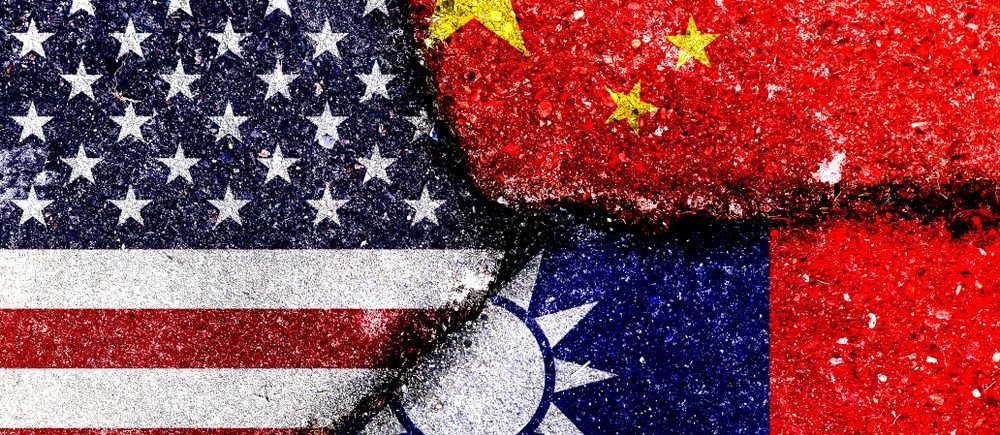US House Speaker Nancy Pelosi landed in Taiwan Tuesday evening, marking a significant show of support for Taiwan despite China’s threats of retaliation over the visit.
Pelosi’s stop in Taipei is the first time a US House speaker has visited Taiwan in 25 years. Her trip comes at a low point in US-China relations despite warnings from the Biden administration against a stop in Taiwan.
The California Democrat is leading a congressional delegation on a tour in Asia this week, which includes stops in Singapore, Malaysia, South Korea, and Japan. Although not included in her official itinerary, expectations that she was planning a visit to Taiwan have fueled US-China tensions since reports of her trip emerged last month.
China’s ruling Communist Party claims the self-ruled democracy of Taiwan as its territory. Despite never having governed it, and has not ruled out the use of force to “reunify” the island with the Chinese mainland.
Beijing has sought to isolate Taipei on the world stage for decades, from chipping away at its diplomatic allies to blocking it from joining international organisations.
China strongly opposes any move that appears to lend Taiwan a sense of international legitimacy. And in the eyes of Beijing, high-profile overseas visits by Taiwanese officials, or visits by foreign officials to Taiwan, will do just that.
In 1995, a visit by Taiwan’s then-President Lee Teng-hui to the United States triggered a major crisis in the Taiwan Strait. Enraged by the trip, China fired missiles into the waters around Taiwan. The crisis ended only after the US sent two aircraft carrier battle groups to the area in a forceful show of support for Taipei.
Beijing sees Pelosi’s trip as a “serious violation” of historical US-China agreements governing their relations.
The US formally switched diplomatic recognition from Taipei to Beijing in 1979 — but has long trod a delicate middle path. Washington recognizes the People’s Republic of China as the sole legitimate government of China, but maintains close unofficial ties with Taiwan.
The US also supplies Taiwan with defensive weaponry under the terms of the decades-old Taiwan Relations Act, but it remains deliberately vague on whether it would defend Taiwan in the event of a Chinese invasion — a policy known as “strategic ambiguity.”
Biden speaks with China’s Xi as tension grows over Taiwan
China’s authoritarian turn under Xi’s leadership and plummeting relations with Washington have pulled Taiwan closer into the orbit of the US. This has infuriated Beijing, which has accused Washington of “playing the Taiwan card” to contain China’s rise.
The US, meanwhile, has stepped up its engagement with Taiwan, approving arms sales and sending delegations to the island.
What’s the US role in all this?
During the Chinese civil war, the United States backed the Nationalists, while the Communists had support from the Soviet Union.
The US continued to support the KMT government after its retreat to Taiwan, providing it with development assistance to help build its economy while shunning the PRC as an ideological and military adversary.
But following a diplomatic conflict between Beijing and Moscow in the 1960s — known as the Sino-Soviet split — relations between the PRC and the US began to thaw to counterbalance the Soviet Union.
By 1979, the US joined a growing list of nations to formally switch recognition from Taipei to Beijing.
In what is known as the “One China” policy, Washington recognizes the PRC as the sole legitimate government of China; It also acknowledges Beijing’s position that Taiwan is part of China but has never accepted the CCP’s claim of sovereignty over the island.
Meanwhile, the US continues to retain close unofficial ties with Taiwan under the terms of the decades-old Taiwan Relations Act, facilitating commercial, cultural and other exchanges through the American Institute in Taiwan (AIT), the de facto US Embassy in Taipei.
For decades since the founding of the PRC, animosity reigned between Beijing and Taipei, with trade, travel and communication largely cut off. Military conflicts continued to flare up, with the PRC shelling several outlying islands controlled by the ROC on two separate occasions.
But tensions began to ease in the late 1980s, allowing limited private visits, indirect trade and investment across the strait. The ties peaked in 2015 during a historic meeting between the heads of the KMT and CCP in Singapore.
But relations deteriorated quickly after 2016, when Tsai Ing-wen from the traditionally pro-independence Democratic Progressive Party (DPP) won a landslide presidential election in Taiwan propelled by concerns among voters that Taiwan was moving too close to Beijing under the KMT government.
After aggressive military displays from Beijing in 2021, Taiwan’s Defense Minister warned that China would be able to mount a “full-scale” invasion of Taiwan by 2025 — prompting discussions on potential armed conflict.
The Chinese military manoeuvres and drills remind Taiwan and the US not to cross Beijing’s red lines, said Bonnie Glaser, director of the Asia Program at the German Marshall Fund of the United States. She said those red lines include campaigning for formal Taiwan independence or a decision to deploy large numbers of US troops to the island.
In an interview with CNN last year, President Tsai said the threat from Beijing was growing “every day.”
But on the streets of Taipei, the mood appears to be most relaxed and confident. And analysts agree that despite the rhetoric and the military sabre-rattling, China is unlikely to invade Taiwan soon.
According to people familiar with the assessments, US intelligence officials have also not seen anything to suggest that China is preparing a military offensive.
 Noor Trends News, Technical Analysis, Educational Tools and Recommendations
Noor Trends News, Technical Analysis, Educational Tools and Recommendations





